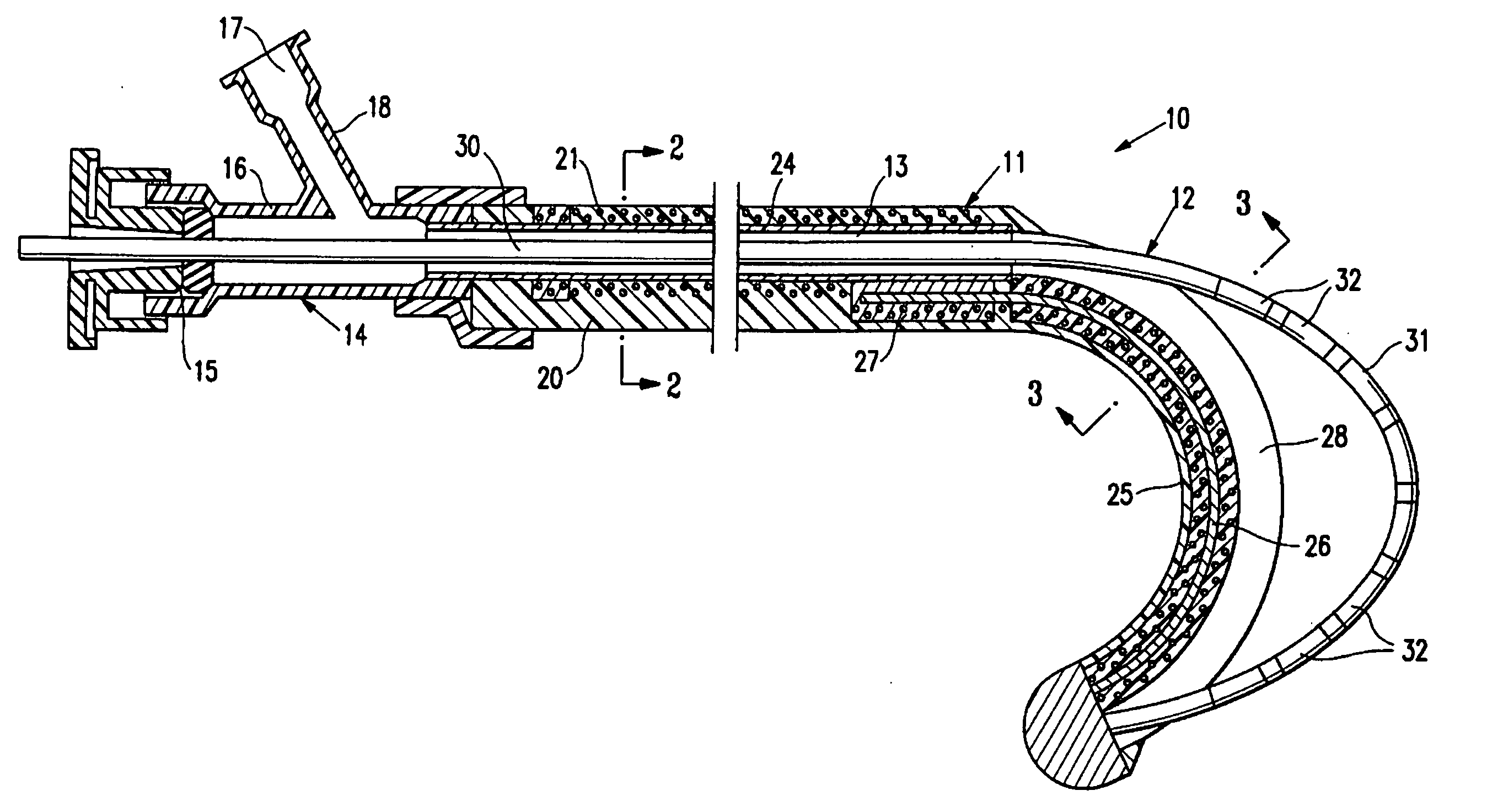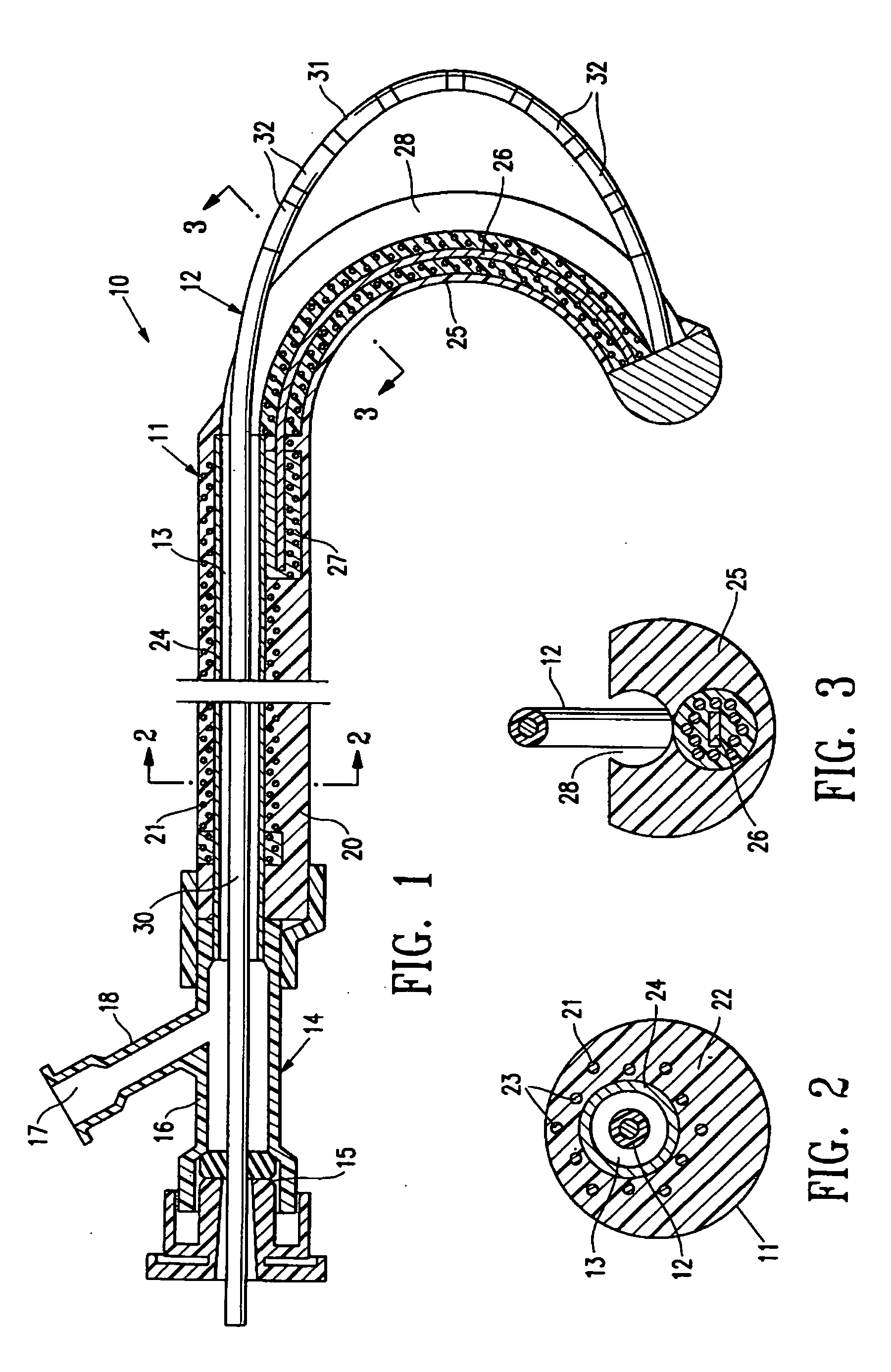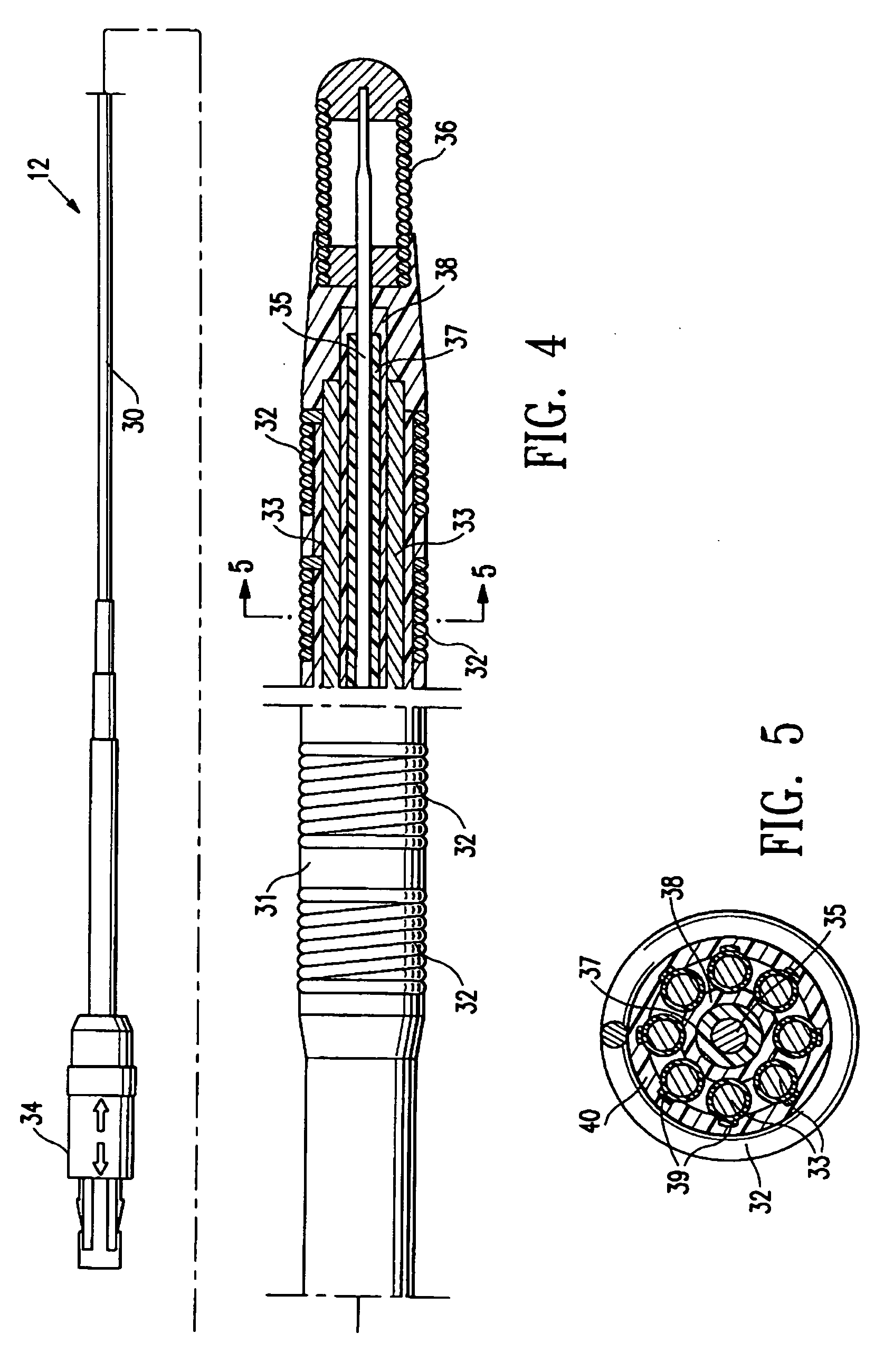Linear ablation assembly
a linear ablation and assembly technology, applied in the field of atrial fibrillation, can solve the problems of inability to easily place avitall devices within the patient's atrial chamber, traumatic surgical technique, and inability to achieve the effect of facilitating the entry of the distal extremity, reducing the effective length of the elongated opening in the distal section of the delivery member, and reducing the effect of the effective length of the elongated opening
- Summary
- Abstract
- Description
- Claims
- Application Information
AI Technical Summary
Benefits of technology
Problems solved by technology
Method used
Image
Examples
Embodiment Construction
[0041]FIGS. 1-3 schematically depict a mapping / ablation assembly 10 embodying features of the invention which generally comprises a delivery member 11 and an elongated. EP device 12 slidably disposed within the inner lumen 13 of the delivery member 11 with the distal end of the EP device secured within the delivery member 11. An adapter 14 is provided on the proximal end of the delivery member 11 with a hemostatic valve 15 on the proximal end of the central arm 16 of the adapter and with a flush port 17 in the proximal end of the side arm 18.
[0042]The delivery member 11 has a proximal shaft section 20 which is formed of a braided tubular structure 21 with a polymer impregnate 22 incorporated therein. The braided structure 21 may be formed of high strength filaments 23 (e.g. 6×6 strands) such as stainless steel wire with a typical diameter of about 0.003 inch (0.08 mm). The polymer impregnate is preferably a thermoplastic polyurethane such as PEBAX 6333. An inner lining 24 of high st...
PUM
 Login to View More
Login to View More Abstract
Description
Claims
Application Information
 Login to View More
Login to View More - R&D
- Intellectual Property
- Life Sciences
- Materials
- Tech Scout
- Unparalleled Data Quality
- Higher Quality Content
- 60% Fewer Hallucinations
Browse by: Latest US Patents, China's latest patents, Technical Efficacy Thesaurus, Application Domain, Technology Topic, Popular Technical Reports.
© 2025 PatSnap. All rights reserved.Legal|Privacy policy|Modern Slavery Act Transparency Statement|Sitemap|About US| Contact US: help@patsnap.com



